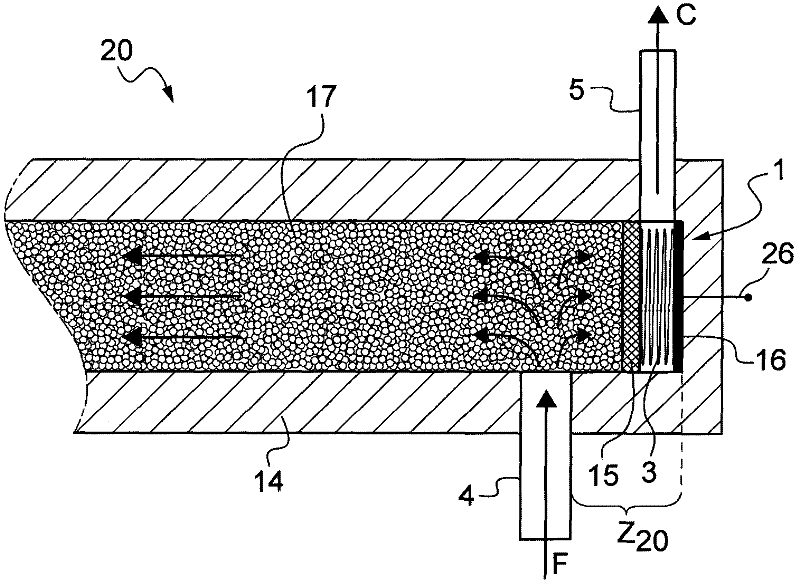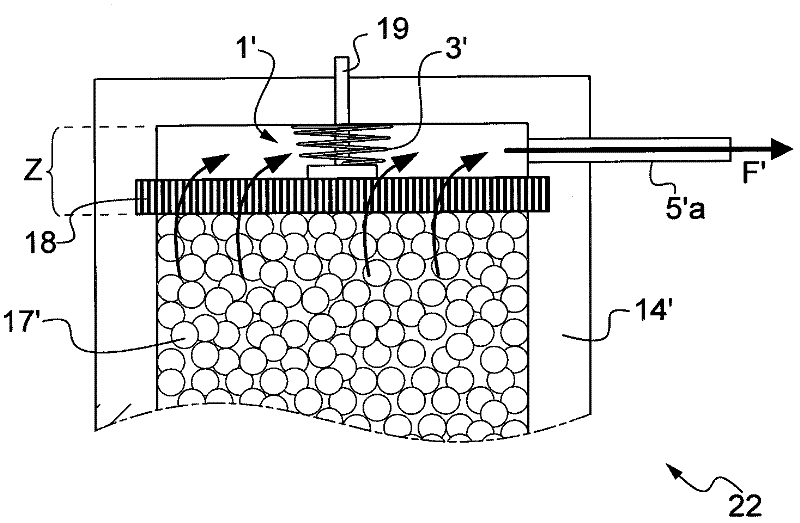Electrodeionization device and method comprising control of the electric current by measurement of ion-exchange material expansion
A technology of ion exchange and material, applied in the direction of ion exchange treatment device, ion exchange column/bed method, ion exchange, etc., can solve the problems of insufficiency, waste, unsatisfactory current adjustment parameters, etc., to avoid mechanical damage, The effect of solution optimization
- Summary
- Abstract
- Description
- Claims
- Application Information
AI Technical Summary
Problems solved by technology
Method used
Image
Examples
Embodiment Construction
[0080] To facilitate understanding, if possible, the same reference numerals are used to denote elements common to the drawings. The illustrations are not to scale and the relative sizes of the various elements in the drawings are schematic descriptions and not to scale.
[0081] In all figures, the compartment is defined by its frame.
[0082] figure 1 It is a schematic representation of the method according to the invention of the EDI device 2 according to the invention.
[0083] According to the method of the present invention, the device 2 can be used to remove anions or to remove cations, as well as for complete deionization.
[0084] The incoming polar liquid stream (F arrow) enters the device 2 through the inlet 4. The deionized liquid stream or diluent (arrow D) flows out of the device 2 through the outlet 6. The concentrated liquid stream (arrow C) can flow out from the outlet 5. Two end plates 7 and 8 each including an electrode define modules (7, 8) of compartments (9, 1...
PUM
 Login to View More
Login to View More Abstract
Description
Claims
Application Information
 Login to View More
Login to View More - R&D
- Intellectual Property
- Life Sciences
- Materials
- Tech Scout
- Unparalleled Data Quality
- Higher Quality Content
- 60% Fewer Hallucinations
Browse by: Latest US Patents, China's latest patents, Technical Efficacy Thesaurus, Application Domain, Technology Topic, Popular Technical Reports.
© 2025 PatSnap. All rights reserved.Legal|Privacy policy|Modern Slavery Act Transparency Statement|Sitemap|About US| Contact US: help@patsnap.com



